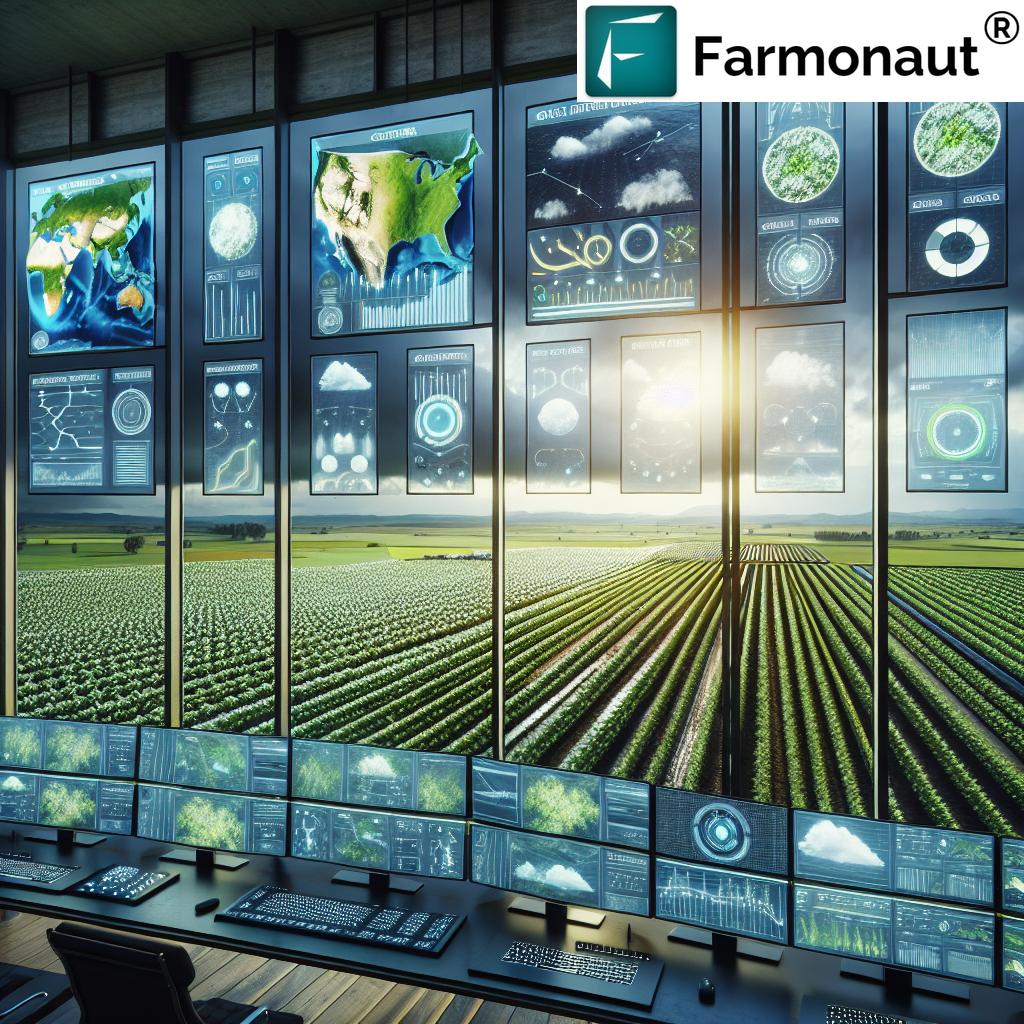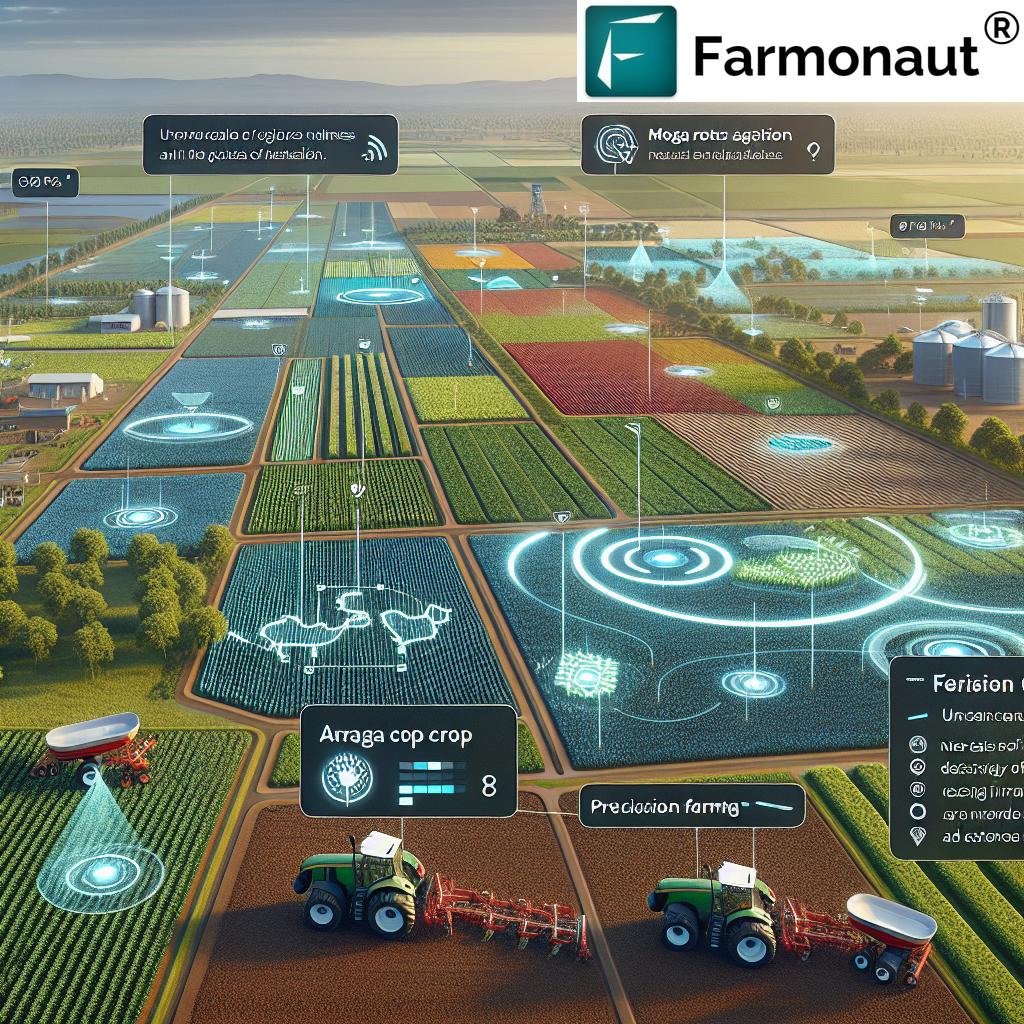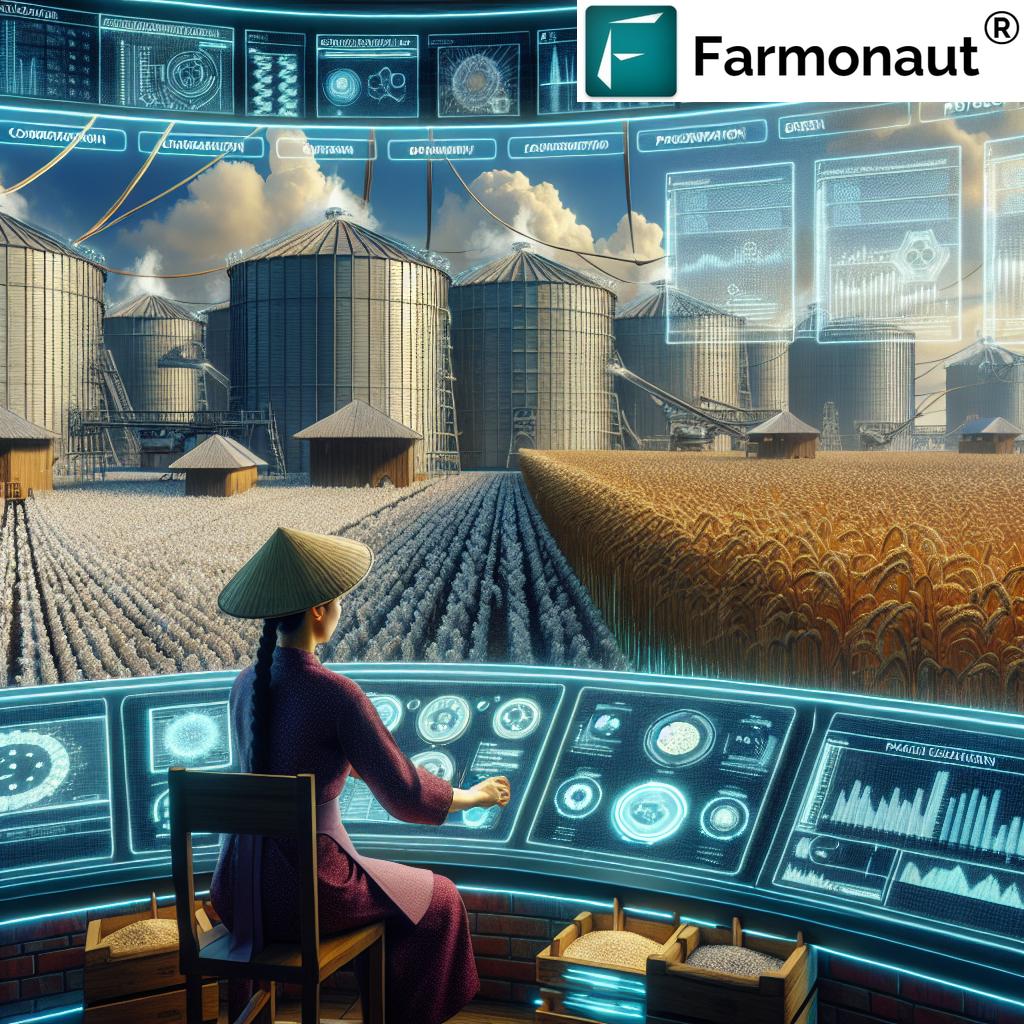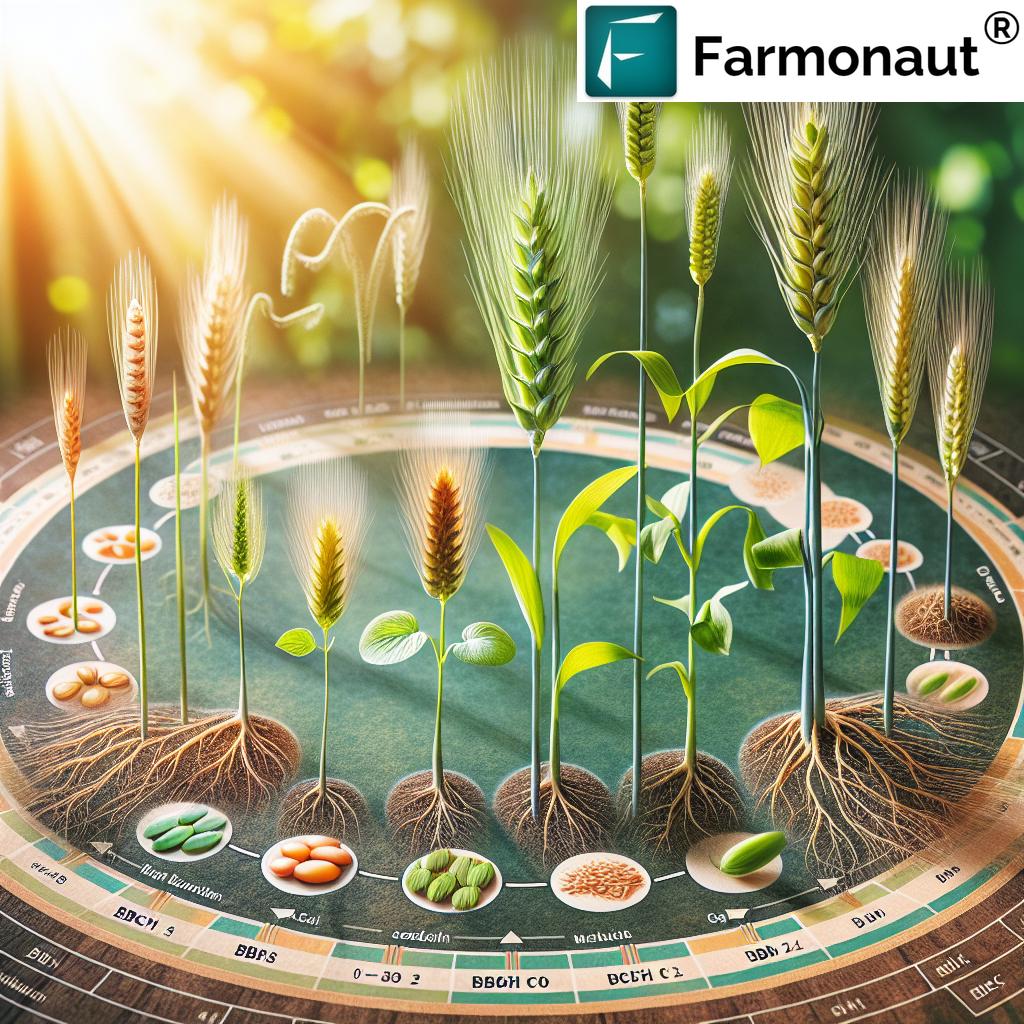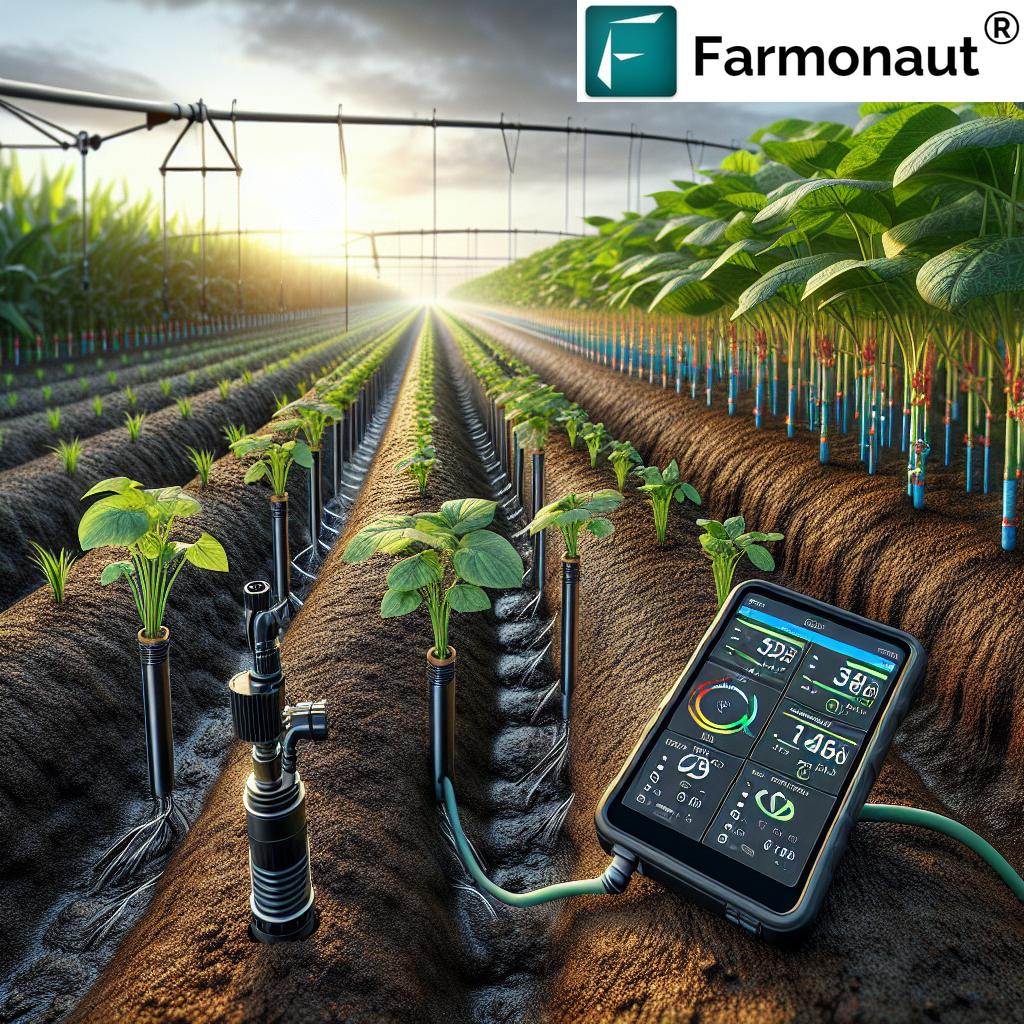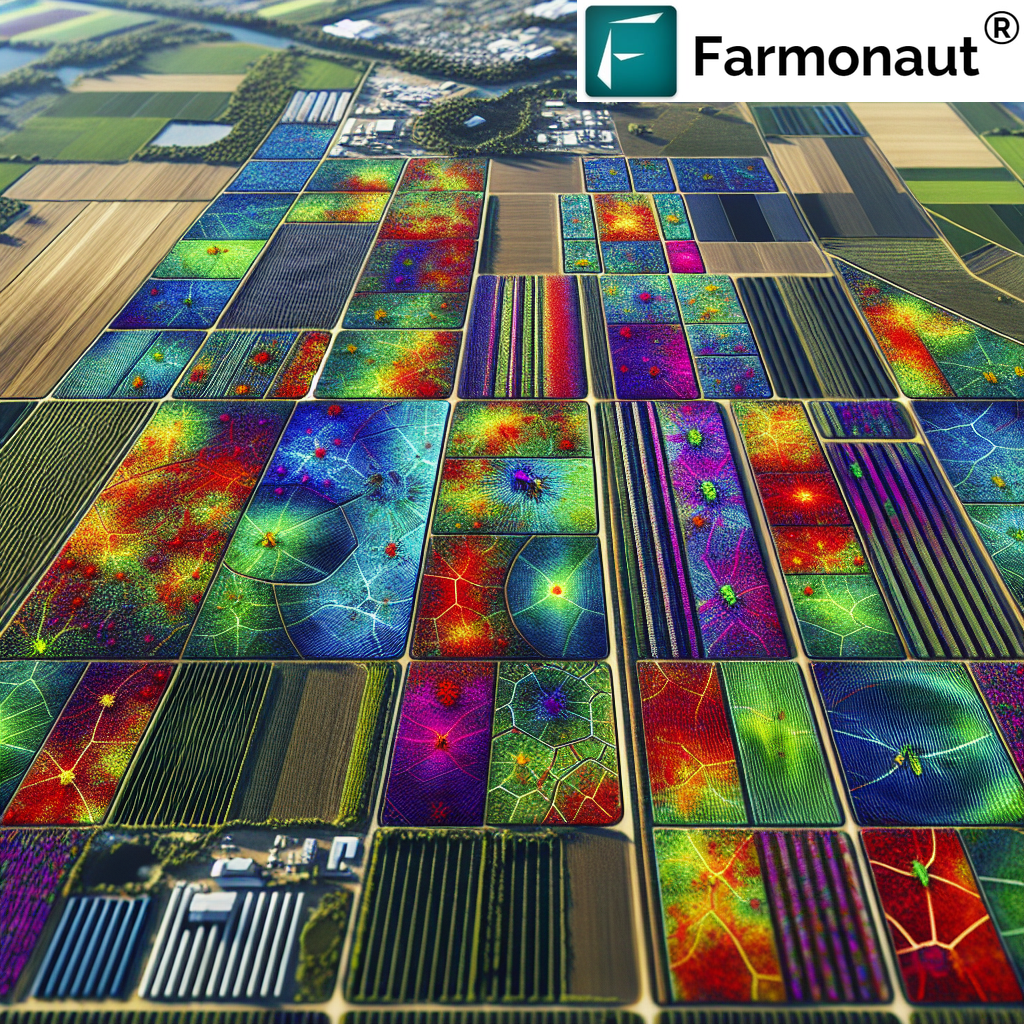“AI-powered crop prediction can increase yields by up to 30% through precise data analysis and forecasting.”
AI for Crop Prediction: 7 Powerful Ways to Boost Yields
In a world where food security and sustainability are of utmost importance, AI in agriculture has emerged as a transformative force. By merging cutting-edge machine learning with real-time data from satellites, drones, and sensors, we can empower farmers to make smart, data-driven decisions for higher yields and optimized resource use. In this comprehensive guide, we explore the seven most powerful ways artificial intelligence is revolutionizing crop yield prediction, precision irrigation, and pest and disease detection in crops to support both productivity and sustainability in modern farming practices.
Understanding AI in Crop Prediction
Artificial Intelligence (AI) is fundamentally transforming agriculture by enhancing our ability to predict yields, monitor crop health, and manage resources with unprecedented precision. The integration of AI technologies such as machine learning in farming and agricultural data analytics allows us to analyze massive amounts of data collected from satellite imagery for agriculture, drone crop monitoring, IoT sensors, and advanced environmental forecasting systems.
By leveraging these data-driven technologies, AI-powered crop management delivers detailed, actionable insights that help farmers optimize planting schedules, manage irrigation requirements, detect diseases and pests early, and make informed input application choices. As we move further into the age of sustainable farming technologies, AI is central to reducing input waste and environmental impacts, ensuring we can meet the growing demand for food sustainably.
How AI Boosts Crop Yield: 7 Powerful Applications
1. Yield Forecasting: Enhancing Crop Yield Prediction Accuracy
Accurate crop yield prediction is the backbone of effective agricultural planning and resource allocation. By harnessing machine learning models, we can analyze a multitude of variables, such as historical yield data, current weather patterns, soil health metrics, and plant growth status, to forecast yields with great precision. Advanced hybrid models—which combine various types of machine learning algorithms—have demonstrated exceptional improvements, often raising accuracy levels by up to 30% compared to traditional approaches.
- These models enable farmers to plan planting schedules, coordinate harvesting, and optimize sales by aligning with market demand.
- Government and industry players use reliable yield forecasts to inform food security policies and trading strategies.
With tools like Farmonaut’s real-time satellite-based crop health monitoring, farmers gain easy access to actionable yield forecasts, empowering them for the season ahead.
2. Disease and Pest Detection in Crops: AI for Early Intervention
Disease and pest infestations threaten crop yields and global food supplies. Delayed response leads to substantial losses—but AI-powered systems utilizing image recognition and sensor-based detection are changing this paradigm. Drones equipped with AI and vast satellite imagery allow us to monitor crops for early symptoms of disease or pests across large fields, even autonomously.
- AI algorithms analyze visual patterns and multispectral data to identify subtle changes indicating health issues.
- By acting early, farmers can implement targeted interventions—applying the right treatment only and where needed, reducing resource consumption and limiting environmental side effects.
The Farmonaut Crop Plantation and Advisory solution provides farmers with easy access to expert AI-driven insights for optimal disease and pest management.
“Precision irrigation using AI reduces water usage by nearly 20%, optimizing resources while maintaining healthy crop growth.”
3. Precision Irrigation Management: AI-Driven Water and Resource Efficiency
Water is one of our most critical agricultural resources. Over-irrigation or under-irrigation both harm yields and influence environmental impacts. AI in agriculture enables precision irrigation management by analyzing real-time soil moisture levels, weather forecasts, and crop nutrient needs, thereby recommending or even automatically scheduling efficient irrigation.
- This targeted approach leads to major water savings—up to 20% less usage while maintaining healthy crop growth.
- Farmonaut delivers soil moisture analytics and AI-based advisory for water optimization to farmers at every scale, directly through mobile and web applications.
To further optimize your own farms, visit the Farmonaut Large-Scale Farm Management page to learn about seamless multi-field oversight, smart irrigation, and robust resource tracking.
4. Resource Optimization: Efficient Input Management for Sustainable Farming
The intelligent use of fertilizers, pesticides, and other crop inputs is crucial for sustainable farming technologies. AI-powered crop management systems analyze soil nutrient levels, crop growth stages, and real-time field conditions to guide targeted input applications—ensuring that every input applied is used where it matters most.
- This minimization of waste not only saves costs, but also reduces environmental impact due to over-application of agrochemicals.
- Farmonaut‘s crop health and soil analytics directly support farmers in maximizing yields while protecting natural resources.
Explore Farmonaut Fleet Management for seamless oversight of agricultural machinery and optimization of operational routes—further reducing input waste, fuel use, and logistics overhead.
5. Climate Impact Assessment: Proactive Adaptation to Weather and Climate Change
With climate change disrupting weather patterns, our farms are now exposed to unpredictable extremes. AI models enable us to analyze different climate scenarios and their probable impacts on crop yields. Using long-term weather forecasts and AI-driven analytics, we can select more resilient crop varieties, plan planting on optimal dates, and proactively mitigate environmental risks.
- Farmonaut’s carbon footprinting solution helps agribusinesses monitor emissions and plan steps toward sustainability.
- Adaptation planning grounded in AI-powered data enables farmers globally to safeguard their livelihoods in an era of climate uncertainty.
Learn how to reduce the carbon footprint of your agri-operations on the Farmonaut Carbon Footprinting page.
6. Soil Moisture and Environmental Monitoring: Real-Time Farm Insights
Continuous monitoring of soil and environmental conditions is key to healthy crop growth. IoT sensors and satellite systems continually feed data on soil moisture levels, temperature, and atmospheric conditions. AI systems synthesize this data, enabling us to manage irrigation, diagnose plant stress, and schedule interventions for optimal growth.
- This approach supports both water-use efficiency and optimal crop development throughout the season.
- Farmonaut’s data services—including Farmonaut API—extend these insights to agritech developers and organizations seeking to power their own applications with real-time agricultural data analytics.
Visit the API Developer Documentation for integration and technical implementation details.
7. Harvesting Time and Pattern Analysis: Precision for Maximum Profitability
Knowing when and where to harvest can be the difference between a bumper yield and wasted potential. AI analyzes growth patterns, satellite imagery, and crop development indicators to pinpoint the optimal harvesting windows—minimizing losses and maximizing food quality.
- Early or late harvesting is flagged, enabling better labor planning and logistics alongside timely market delivery.
- Through precise analysis, AI helps farmers optimize profits and reduce post-harvest losses.
Looking for full transparency in your agricultural supply chain? Discover powerful Blockchain-Based Product Traceability from Farmonaut, ensuring every harvest batch is tracked securely from field to shelf.
Technologies Enabling AI in Crop Prediction & Yield Optimization
The synergy of several breakthrough technologies makes AI in agriculture possible. Let’s break down the core tools we use to empower farmers and agribusinesses worldwide:
- Satellite Imagery for Agriculture:
- Satellites deliver multispectral and hyperspectral imagery of fields. AI-powered analysis helps detect plant stress, pest activity, moisture variation, and disease symptoms early—even when undetectable to the naked eye.
- Drone Crop Monitoring:
- AI uses drone surveillance to survey large fields, measure health status, and localize anomalies—for efficiently targeted farming interventions.
- IoT Sensors:
- These measure soil moisture, nutrient levels, temperature, humidity, and other conditions, feeding real-time data into AI systems for continuous monitoring.
- Machine Learning Models:
- Advanced statistical & mathematical algorithms process vast datasets from various sources to predict yields, spot disease patterns, and optimize scheduling.
- Weather Analytics:
- Integrates global and local weather forecasts with field-level data to anticipate stresses and enable adaptive planning.
Farmonaut: Making AI-Driven Precision Agriculture Accessible
At Farmonaut, we’ve dedicated our mission to making precision agriculture and AI-powered crop management both affordable and accessible to farmers and agribusinesses worldwide. Unlike expensive, hardware-heavy traditional precision farming tools, Farmonaut leverages satellite-based crop health monitoring, blockchain traceability, and robust AI imaging and analytics to provide:
- Real-Time Crop Health Insights: Detailed NDVI vegetation indices, soil moisture trends, and growth patterns right from your smartphone or web portal.
- AI-Based Advisory Systems: Our personalized Jeevn AI platform analyzes satellite and sensor data to give you actionable, field-specific advice on irrigation, inputs, and disease management.
- Secure Blockchain Traceability: Complete transparency for corporate supply chains and food producers, building consumer trust and combatting fraud.
- Efficient Resource & Fleet Management: Track machinery, optimize routes, and lower operating costs for scalable agribusiness operations.
- Carbon Footprinting: Monitor and reduce your environmental impact with real-time emissions tracking tools, supporting sustainability reporting.
- Open Access APIs: Integrate Farmonaut’s data streams into your own applications and digital solutions to power new agtech innovations.
Our platform is available globally via Android, iOS, web/browser App, and API. Individual farmers, agribusinesses, and developers can easily choose from flexible subscription tiers, each tailored to their operational scale and required data frequency.
Comparison Table: AI Applications in Agriculture
| AI Application | AI Technology Used | Est. Accuracy Improvement (%) | Est. Yield Increase (%) | Potential Cost Savings (%) | Sustainability Impact |
|---|---|---|---|---|---|
| Crop Yield Prediction | Machine Learning, Remote Sensing | 25–30 | 10–20 | 5–10 | High |
| Disease & Pest Detection | AI Imaging, Drone Monitoring | 15–30 | 5–12 | 5–15 | High |
| Precision Irrigation Management | IoT Sensors, Predictive Analytics | 20–25 | 10–18 | 15–25 | High |
| Resource Optimization | AI Advisory, Soil Analytics | 18–25 | 8–15 | 10–20 | High |
| Climate Impact Assessment | AI Weather Models, Data Analytics | 16–22 | 7–14 | 6–12 | Medium |
| Soil Moisture Monitoring | IoT Sensors, AI Algorithms | 18–23 | 6–12 | 12–18 | Medium |
| Harvesting Optimization | Satellite Imagery, Decision Algorithms | 15–20 | 8–12 | 5–10 | Medium |
Key Benefits of AI in Crop Prediction and Farm Management
- Increased Efficiency: AI automates complex data analysis, freeing up farmers to focus on strategy, rather than manual monitoring.
- Cost Savings: Optimized resource use and reduced waste mean lower input costs and higher profitability. AI-driven irrigation, for example, can generate significant water savings.
- Sustainability: Targeted management reduces chemical and water use, conserving resources and lowering environmental impact—a win for both farms and the planet.
- Improved Decision-Making: Accurate, real-time data ensures every farm decision is grounded in evidence, leading to superior productivity and reduced risk.
- Scalability: Cloud-based AI systems like Farmonaut scale easily—from single-acre plots to thousands of hectares, enabling global food security improvements.
- Openness & Transparency: Blockchain-based traceability builds consumer trust in food supply chains, while robust data sharing opens up new markets and improves traceability.
Challenges and Considerations in AI Adoption for Farming
- Data Quality and Availability: Effective AI models require large volumes of high-quality data, which can be limited in some regions.
- Technical Expertise: Using AI tools necessitates basic technological training. That’s why user-friendly applications—like Farmonaut—are crucial for widespread adoption among traditional farmers.
- Cost of Implementation: Initial costs of deploying AI hardware or subscribing to advanced analytics can be a barrier, especially for smallholders.
- Data Privacy and Security: Agricultural data includes sensitive information. Robust digital safeguards are vital for ownership and privacy protection, especially where supply chain traceability is needed.
Farmonaut is dedicated to addressing these challenges by providing cost-effective precision agriculture, farmer-friendly interfaces, and secure, blockchain-powered data solutions. The platform breaks down barriers through affordable subscriptions and multilingual mobile/web access.
Future Outlook: AI for Crop Prediction and Sustainable Farming
The horizon for AI in agriculture is exceptionally promising. As machine learning, sensor technology, and data analytics continue to advance, we anticipate AI will permeate nearly every aspect of farm management—delivering new capabilities in resilience, sustainability, and output optimization.
Wider adoption of cloud-based, mobile-accessible, and cost-effective platforms (like Farmonaut) will power a new generation of food systems—ones that are secure against climate volatility, optimized for efficiency, and lighter on environmental impact.
We invite all forward-thinking farmers, agri-entrepreneurs, and agricultural technology developers to explore Farmonaut’s suite of applications and APIs. Whether through our mobile app, browser platform, or developer docs, the pathway to AI-driven, sustainable crop management is at your fingertips.
FAQ: AI for Crop Prediction and Farmonaut Services
What is AI for crop prediction?
AI for crop prediction refers to the use of algorithms, machine learning models, sensor data, and agricultural analytics to forecast yields, detect diseases and pests, optimize irrigation, and help manage farm resources efficiently—empowering data-driven farming decisions.
How does AI improve yield prediction accuracy?
AI improves accuracy by analyzing huge datasets from satellite imagery, historical weather, soil sensors, and crop growth patterns to find relationships and forecast results more reliably than manual estimation.
How can I access precision irrigation and crop monitoring on my farm?
Simply sign up for the Farmonaut app (Android, iOS, browser) for affordable, real-time field insights—including soil moisture, health indices, and AI-driven advisory solutions.
How can my agribusiness integrate Farmonaut’s satellite and weather API?
Developers and companies can integrate Farmonaut’s data by visiting the API documentation and developer docs for full integration guides.
Can Farmonaut help with crop loans and insurance verification?
Yes! Farmonaut offers satellite-based farm verification services that support more efficient, credible crop loan and insurance assessments. Learn more at Farmonaut Crop Loan & Insurance.
What is blockchain-based traceability, and why is it important?
Blockchain-based traceability creates a tamper-proof, step-by-step record of every stage in the agricultural supply chain—from field to consumer. This boosts transparency, food safety, and brand trust. Discover more on the Farmonaut Traceability page.
Is AI in agriculture suitable for smallholder farmers?
Absolutely. Farmonaut and similar platforms are designed to democratize advanced technology for farms of all sizes, delivering affordable access through user-friendly mobile, web, and API interfaces.
Farmonaut Plans & Subscriptions
Ready to unlock the power of AI-powered crop prediction, satellite monitoring, and precision agriculture for better yields and smarter decisions? Choose from a range of flexible Farmonaut plans below:
For custom enterprise or developer solutions, contact us or view the Large Scale Farm Management options.
Conclusion: Leading the Future of Data-Driven, Sustainable Farming
AI’s influence on crop prediction and farm management is reshaping the agricultural landscape around the world. By leveraging a blend of satellite-based crop monitoring, machine learning in farming, and real-time data analytics, we are enabling farmers to optimize yields, reduce input waste, and manage environmental impacts more effectively than ever before. Platforms like Farmonaut are making these AI technologies cost-effective and accessible on a global scale, breaking barriers for both smallholders and large enterprises.
As we collectively journey toward a sustainable, resilient, and efficient food system, embracing AI for crop prediction is the key. From yield forecasting and precision irrigation management to climate adaptation and secure supply chains, the future of agriculture is smarter, greener, and more productive.
Ready to boost your farm’s yield, efficiency, and sustainability? Try Farmonaut’s AI-powered crop intelligence tools today!


